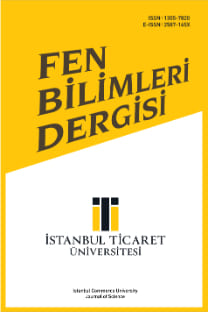SOSYAL EKONOMIK VE FİZİKSEL ÇEVRE FAKTÖRLERİNİN SUÇ ORANLARI ÜZERİNDEKİ ETKİLERİ: ISTANBUL BOGAZİÇİ ÖNGÖRÜNÜM ALANINDA DENEYSEL BIR ÇALIŞMA
Bu çalışma sosyal, ekonomik ve fiziksel çevre faktörlerinin suç oranları üzerindeki etkisini İstanbul Boğaziçi Öngörünüm alanında deneysel olarak test etmeyi amaçlamıştır. Sosyal ve ekonomik durum göstergeleri olarak nüfus yoğunluğu, ortalama arazi değeri, işsizlik oranı, eğitim ve hane halkı büyüklüğüne ilişkin veriler kullanılmıştır. Fiziksel çevrenin özelliklerine yönelik göstergeler ise yapı yoğunluğu, arazi kullanış durumu, fiziksel bozulma, ve altyapı olanaklarına ait verileri içermiştir. Sonuç olarak (1) cana ve mala karşı işlenmiş suç oranları arasında pozitif bir korelasyon olduğu, (2) mala karşı işlenen suçlarda fiziksel çevre özelliklerinin sosyal çevre özelliklerinden daha etkili olduğu (3) sosyal ve ekonomik açıdan dezavantajlı bölgelerde suç oranlarının daha düşük olduğu bulunmuştur. Bundan sonra konu hakkında yapılacak araştırmalara yön verebilmek amacıyla, elde edilen bulgular çalışmanın yöntemi ve kapsadığı alan kapsamında tartışılmıştır
Anahtar Kelimeler:
Cana Karşı İşlenen Suçlar, Mala Karşı İşlenen Suçlar, Fiziksel Çevre, Deneysel Araştırma
The Influence Of Social, Economical And Physical Environmental Factors On Crime Rates: A Case Study Of The Bosphorus Conservation Area, Istanbul, Turkey
This study aims to analyze the relation between personal and property crime and social, economical and physical environmental factors. Crime data was collected at neighborhood level in the coastal strip and fore front view area of the Bosphorus, Istanbul, Turkey. For the social and economical factors, data on population density, average land value, percentage of unemployment, percentage of population with primary school and under education, and percentage of large households were collected. For the physical environmental factors, data on building density, land use (percentage of residential, commercial, and public facilities buildings), physical detoriation (percentage of good quality buildings), percentage of buildings with water, sewage and natural gas were collected. In general, the findings provided evidence that (1) personal and property crimes are positively correlated, (2) the affect of physical environmental factors are more pronounced for property crimes than personal crimes, and (3) lower crime rates are observed in socially and economically disadvantageous neighborhoods. The possible explanations for each finding and how each finding could inform future research in this area are discussed.
Keywords:
personal crime, property crime, physical environment, empirical study,
___
- Ackerman, Vw & Murray, TA (2004) Assesing Spatial Patterns of Crime in Lima, Ohio. Cities, 21, 423-437.
- Ackerman, WV (1976) Spatial distribution and socioeconomic correlates of crime in San Bernardino, California. The California Geographer 16, 29–42.
- Ayhan, İ & Çubukçu, KM (2010) Mekanın Suça Etkisi (The Effect of Spaces on Crime). Yapı Mimarlık, Kültür ve Sanat Dergisi, 339, 44-49.
- For example for the percentage of good quality buildings within a neighbourhood, each building was classified as good, average or bad.
- Browning, Cr, Byron, R, Calder, Ca, Krivo, Lj, Kwan, M-P, Lee, Jy & Peterson, RD (2010) Commercial Density, Residential Concentration, and Crime: Land Use Patterns and Violence in Neighborhood Context. Journal of Research in Crime and Delinquency, 1-29
- Patterson, EB (1991) Poverty, Income Inequality, and Community Crime Rates. Criminology, 29, 755–76.
- Ergun, N & Yirmibesoglu, F (2007) Distribution of Crime Rates in Different Districts in Istanbul, Turkish Studies, 8, 435 – 455.
- Ergun, N, Giritlioglu, C & Yirmibesoglu, F (2003) Social Change and Criminality in the City Center of Istanbul, European Regional Science Association Conference 08/2003,
- wien.ac.at/ersa/ersaconfs/ersa03/cdrom/papers/444.pdf (last accessed, August 08, 2010). Jyvaskyla, Finland.
- http://www-sre.wu- Ergun, N & Yirmibeşoğlu, F (2005) İstanbul’da 2000-2004 Yılları Arasında Suçun Mekansal Dağılımı. 8 Kasım Dünya Şehircilik Günü 29. Kolokyumu “Planlamada Yeni Politika ve Stratejiler Riskler ve Fırsatlar, İstanbul, 295-307.
- Kohlfeld, Cw & Sprague, J (1988) Urban unemployment drives urban crime. Urban Affairs Quarterly, 24, 215–241.
- Levitt, Sd & Dubner, Sj (2006) Freakonomics: A Rogue Economist Explores The Hidden Side Of Everything. Penguin Books Ltd. London, England.
- Lockwood, D (2007) Mapping crime in Savannah: Social disadvantage, landuse, and violent crimes reported to the police. Social Science Computer Review, 25, 194-209. Maslow, A (1943) A theory of human motivation. Psychological Review, 50, 370- 396.
- Newman, O (1972) Defensible space. Crime prevention through urban design. London: MacMillan.
- Unlu, A, Edgu, E, Apak, S & Ulken G (2003) Istanbul’da Kentlesme ve Suç Üzerine Toplu Bakıs (An Overview on Crime and Urbanism in Istanbul), International 14 th Urban Design and Implementations Symposium, Mimar Sinan University, 205-210. Unlu, A, Edgu, E, Ozener, Oo & Ozden T (2004) Axial Lines and Crime Relationship in Central Neighbourhoods, A/Z ITU Journal of the Faculty of Architecture, 1, 43-57.
- Van DIJK, JJM, Van KESTEREN, JN & SMIT, P (2008) Criminal Victimisation in International Perspective, Key findings from the 2004-2005 ICVS and EU ICS. The Hague, Boom Legal Publishers.
- Yirmibesoglu, F & Ergun, N (2007b) İstanbul’da Suç (Crime in Istanbul), Dosya 6: Kent ve Suç, No. 55, 11/2007, 24-29, TMMOB Mimarlar Odası, Ankara Şubesi.
- Yirmibesoglu, F & Ergun, N (2007a) Property and Personal Crime in Istanbul,
- European Planning Studies, 15, 339 – 355.
- ISSN: 1305-7820
- Yayın Aralığı: Yılda 2 Sayı
- Başlangıç: 2002
- Yayıncı: Doç. Dr. Necip Şimşek
Sayıdaki Diğer Makaleler
Eylem Akman CINAR, Ebru CUBUKCU
Yumuşatıcı ve Silikon Varlığında Pamuklu Kumaşların Haslık Değerlerinin İncelenmesi
Aylin YILDIZ, Merve ÖZTAŞ, Sevgi YAVUZER, A.özgür AĞIRGAN
İstanbul Ticaret Üniversitesi Fen Bilimleri Dergisi Makale Sunum Formu
Muhammet GÜL, Erkan ÇELİK, Ali Fuat GÜNERİ, Alev Taşkın GÜMÜŞ
Poli (Laktik Asit)’İn Kullanım Alanları ve NANO Lif Üretimdeki Uygulamaları
İbrahim ÜNER, Emine Dilara KOÇAK
Nigar MERDAN, Dilara KOÇAK, Kamil ACAR
Etkin Sınır ve Beta Katsayı Kısıtlı Portföy Seçim Modeli Üzerine Bir Uygulama
İstanbul Ticaret Üniversitesi Fen Bilimleri Dergisi Yayın Koşulları ve Yazım Kuralları
